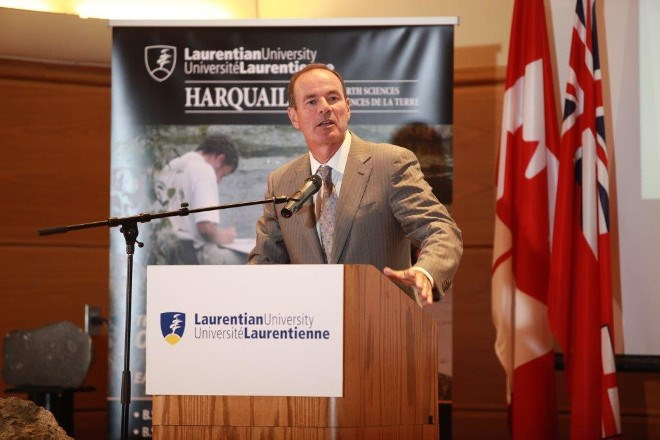Laurentian has made a business of private fundraising over the past few years, and it's paid off in 2016.
With four major announcements in the last 12 months totaling $24 million, they've had a packed calendar fuelled by a combination of hard work and luck.
“2016 has been our most successful year but not by design. It's really a matter of luck that these donations and projects happened to fall into a six-month period; it just accumulated into this incredible couple of months,” said Kristy Rousseau, director of development at Laurentian.
In November, the university announced the family of Norinne Perdue invested $1 million in the university's new research and development centre, which will be named the Norinne E. Perdue Collaborative Research and Development Centre. The centre will be located in the Cliff Fielding Research, Innovation and Engineering building, which was unveiled in October after a $3-million investment from the wife and family of local businessman Cliff Fielding, who was also Perdue's grandfather.
Earlier, in June, Goldcorp founder Rob McEwen and his wife Cheryl gave $10 million to the new school of architecture, now known as the McEwen School of Architecture. And in September, the Department of Earth Sciences was rebranded as the Harquail School of Earth Sciences after Franco-Nevada president and CEO David Harquail's family invested $10 million in the department and in its Mineral Exploration Research Centre (MERC).
Despite the luck involved, Rousseau said the funding is due to a very deliberate strategy by Laurentian's fundraising team.
“We modernized and ramped up the fundraising structure,” said Rousseau. “It's really an anomaly we'd have this much in one year, but it's a long-term investment. We've worked with these people for many years.”
In 2008, Laurentian launched The Next 50, a fundraising campaign that followed their 50th anniversary celebrations. The campaign aimed to raise $50 million in five years. In 2013, they announced they'd exceeded their goal, and raised $65.2 million in private funding, excluding government investments.
However, Rousseau said that the continuation of the strategy is what has made Laurentian successful since.
“A lot of times in the past, whether it be the university or hospital or other institution, fundraising happens as part of a campaign... but as soon as the campaign was over they'd go down to a skeleton staff. When we closed, we maintained almost the same level of staff to communicate with donors,” said Rousseau. “We maintained the team.”
The team has taken a direct solicitation approach. There are no galas or receptions, but there are a lot of phone calls, one-on-one meetings, and other personal touches. Rousseau said sometimes people will approach them looking to invest, but that the vast majority of investments are a result of their fundraising team's work.
“It's because we've asked for them,” Rousseau said.
Harquail said it wasn't hard to say yes when he was asked.
His involvement started in 2013 when Franco-Nevada funded the mining chair for the Goodman School of Mines, as part of the Next 50 campaign. Ned Goodman had introduced him to the fundraising team.
Harquail stayed involved at the university, impressed by their funding strategy.
“I've seen other universities and usually they're asking you to fund buildings, or endowments, or chairs... sometimes it's frustrating. If you do a chair, they're pulling out other resources, and your net isn't any real improvement,” said Harquail. “It's clear in the contract that what you're adding is incremental to the program.”
He said the prioritization of mining research and programming also drew him.
“What I like is they're effectively getting a cluster of support to create a really great mining sector at one school,” said Harquail. “I'm giving to the mining school, and it's nice to see the president is passionate about mining and wants to make it strategic – can't think of any other university in Canada that makes it such a priority.”
In terms of funding amounts, Rousseau said they aren't that different from other Canadian universities, but they stand out in the region.
“We're pretty similar to most mid-large universities, we're small in the university sector, but if you look at us in comparison too other non-profits in Sudbury....we're big in terms of fundraising in Sudbury,” said Rousseau.
And she said the last year has bumped them up just a little more.
“We're in a new league,” said Rousseau.




